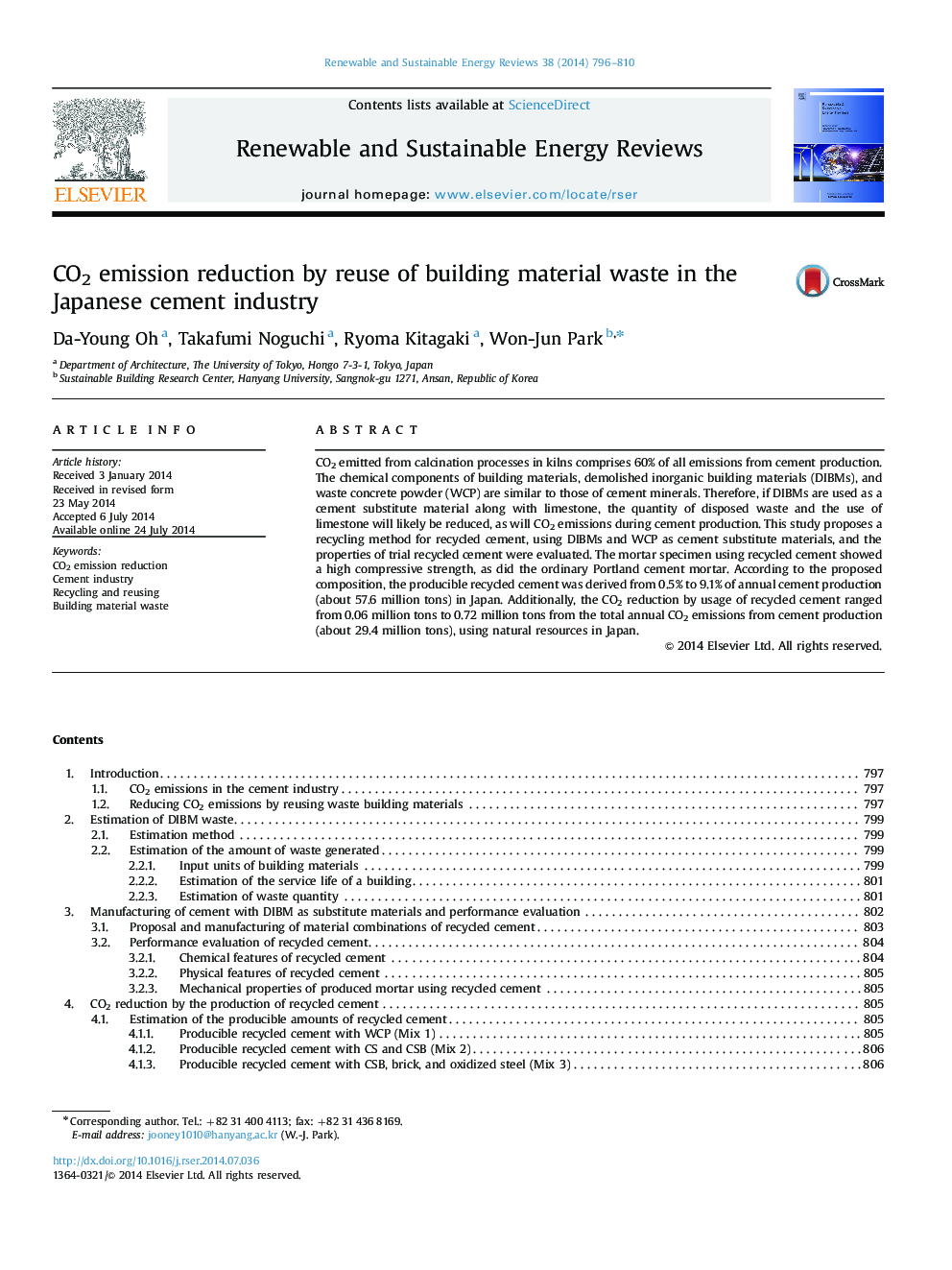| Article ID | Journal | Published Year | Pages | File Type |
|---|---|---|---|---|
| 8119854 | Renewable and Sustainable Energy Reviews | 2014 | 15 Pages |
Abstract
CO2 emitted from calcination processes in kilns comprises 60% of all emissions from cement production. The chemical components of building materials, demolished inorganic building materials (DIBMs), and waste concrete powder (WCP) are similar to those of cement minerals. Therefore, if DIBMs are used as a cement substitute material along with limestone, the quantity of disposed waste and the use of limestone will likely be reduced, as will CO2 emissions during cement production. This study proposes a recycling method for recycled cement, using DIBMs and WCP as cement substitute materials, and the properties of trial recycled cement were evaluated. The mortar specimen using recycled cement showed a high compressive strength, as did the ordinary Portland cement mortar. According to the proposed composition, the producible recycled cement was derived from 0.5% to 9.1% of annual cement production (about 57.6 million tons) in Japan. Additionally, the CO2 reduction by usage of recycled cement ranged from 0.06 million tons to 0.72 million tons from the total annual CO2 emissions from cement production (about 29.4 million tons), using natural resources in Japan.
Related Topics
Physical Sciences and Engineering
Energy
Renewable Energy, Sustainability and the Environment
Authors
Da-Young Oh, Takafumi Noguchi, Ryoma Kitagaki, Won-Jun Park,
